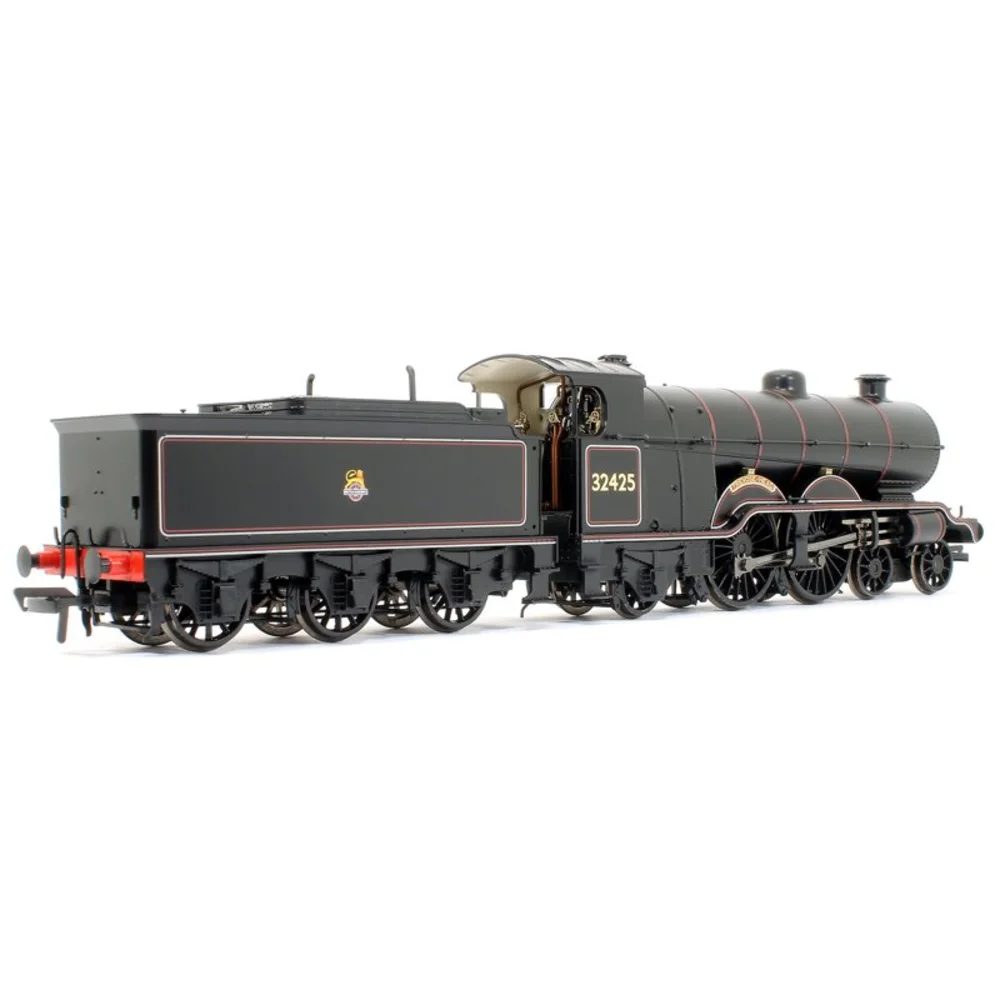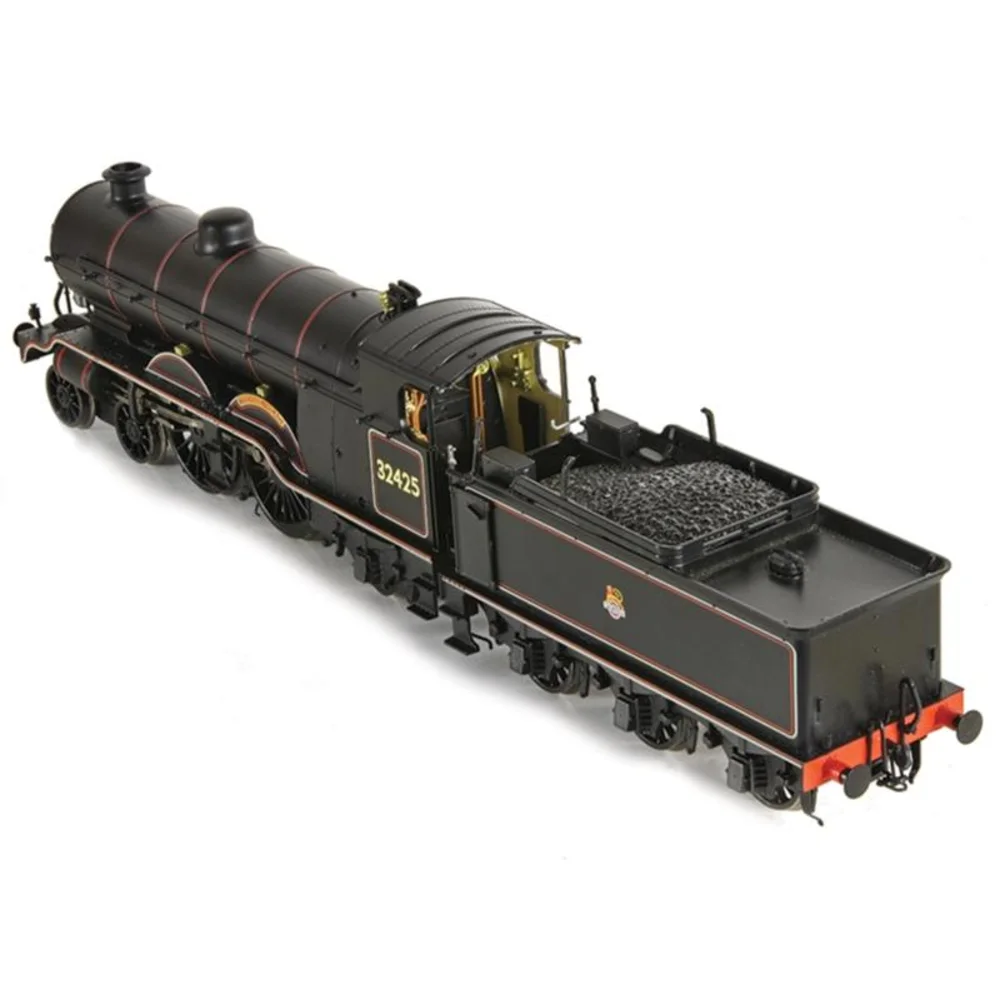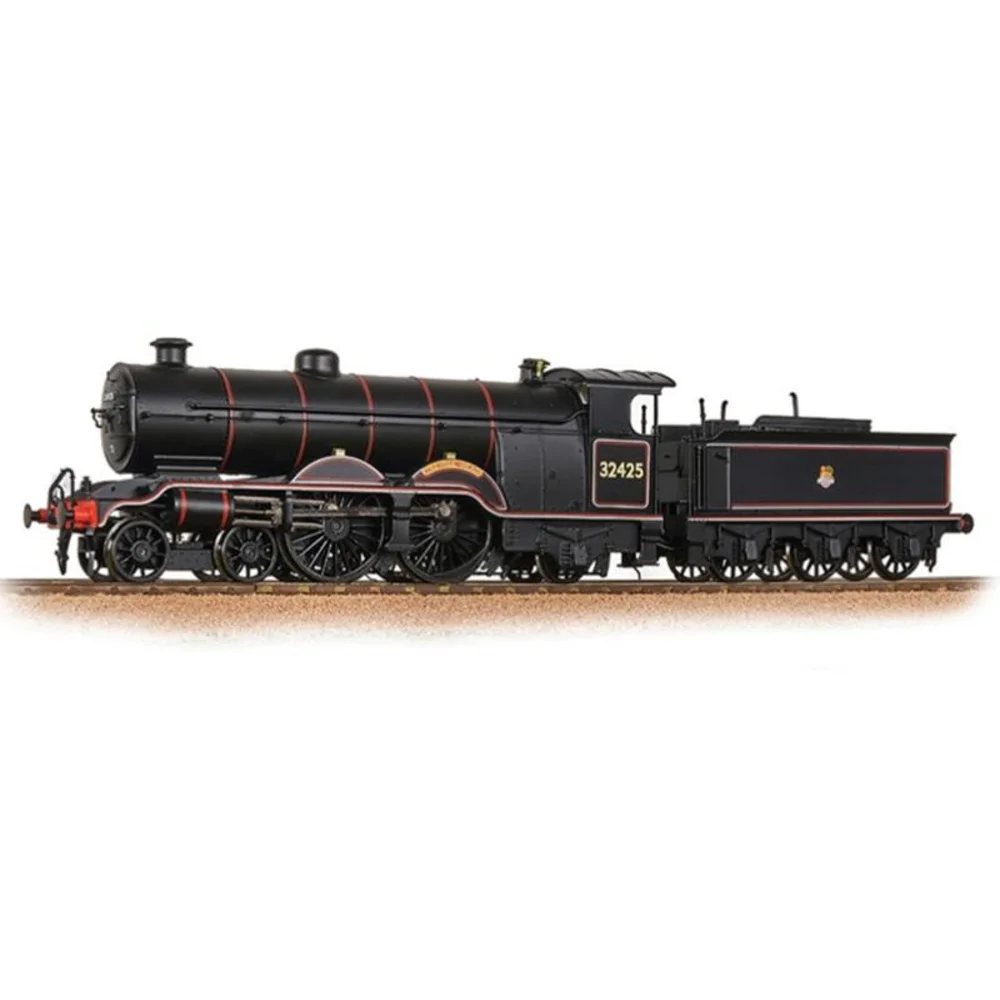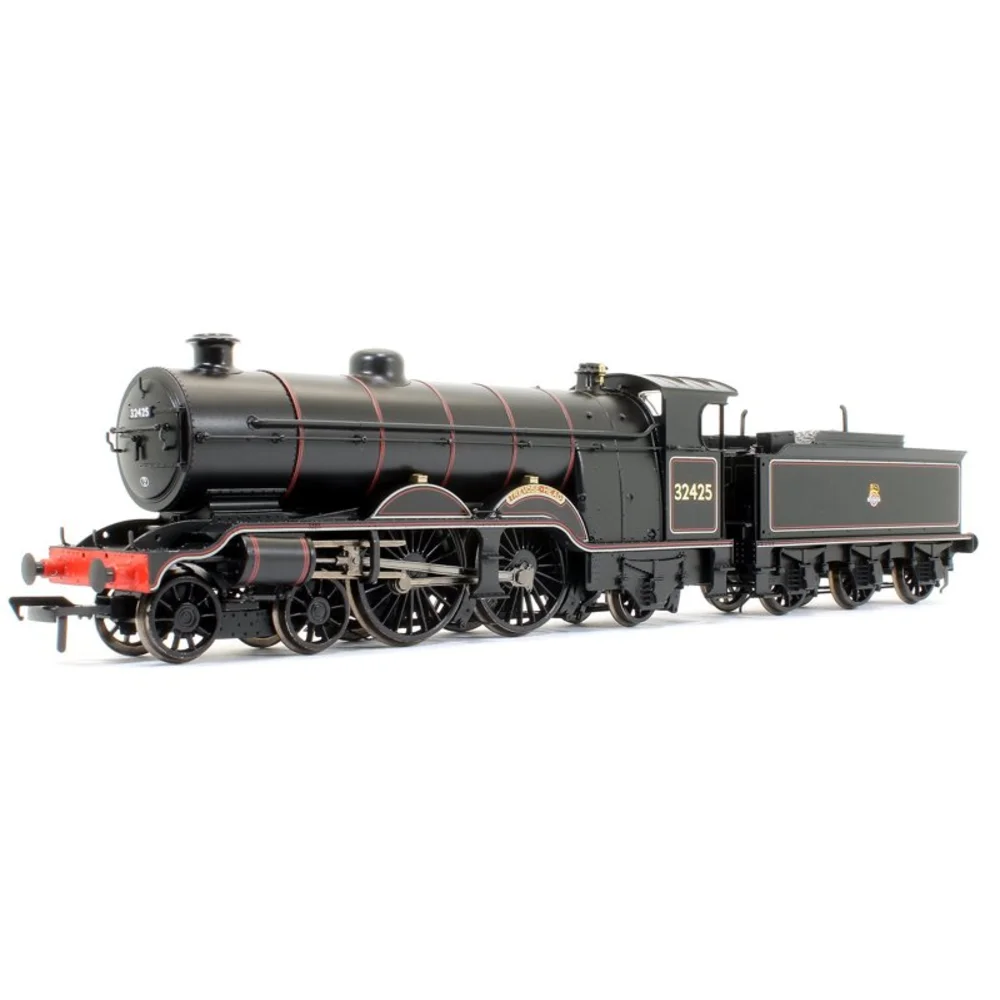Bachmann 31-921ASF
London, Brighton & South Coast Railway H2 32425 Trevose Head British Railways Lined Black with Early Emblem
Tooling
The Bachmann Branchline model of the London, Brighton & South Coast Railway H2 Class “Brighton Atlantic” was announced at the Bachmann Collectors Club Members Day in 2013 and released in 2018. The tooling covers both H1 and H2 classes, reflecting their historical significance as express passenger locomotives introduced between 1911 and 1912. These locomotives were designed by Lawson Billinton, incorporating Schmidt superheaters, and worked prestigious services such as the Southern Belle and boat trains until the mid-1950s. None survived into preservation, but a new-build replica of No. 32424 “Beachy Head” is now operational on the Bluebell Railway.
Tooling Features
- Scale: OO gauge (1:76).
- Construction: Combination of plastic and metal components with a robust chassis.
- Detailing: Factory-fitted separate details including handrails, pipework, safety valves, smokebox door dart, whistle, and cab interior. Etched nameplates supplied in accessory packs.
- Couplings: NEM pockets with tension-lock couplers; screw-link couplings included for display.
- Finish: High-quality livery application with accurate lining and lettering.
Mechanical & Electrical
- Motor: Smooth-running can motor located in the locomotive.
- Drive: Loco-driven wheels with tender pickups for improved electrical continuity.
- Minimum Radius: Second radius (438 mm).
- Lighting: No factory lighting fitted.
- Weighting: Integrated within chassis for adhesion.
DCC Capability
- DCC Ready with 21-pin socket.
- Speaker mount provided for optional sound installation.
- Factory sound-fitted versions available in later releases.
Liveries Produced
- LB&SCR Umber with gold lining (Era 2).
- Southern Railway Maunsell Green (Era 3).
- British Railways Lined Black with early emblem (Era 4).
Reviews & Commentary
The model received positive feedback for its fine detailing, accurate proportions, and smooth running. Reviewers highlighted the intricate cab detail, etched plates, and authentic valve gear representation. Some criticism was noted regarding the long lead time from announcement to release, but overall reception was strong among collectors and Southern Region enthusiasts. Social media and YouTube reviews praised its aesthetics and mechanism, with performance tests confirming reliable running and good haulage capacity.
Interesting Notes
- The tooling was developed in collaboration with the Bluebell Railway Atlantic Group, supporting the new-build “Beachy Head” project.
- Accessory packs include route indicator discs, vacuum pipes, and hinged tender fall-plate for added realism.
Class & Prototype
- Class: London, Brighton & South Coast Railway H2
- Traction: Steam
- Built: 1911-1912
- Total Built: 6
- Running Number: 32425
- Name: Trevose Head
- Ordered By: London, Brighton & South Coast Railway
- Built By: London, Brighton & South Coast Railway
- Built At: Brighton
- Built: 12/1911
- Withdrawn: 09/1956
- Length of Service: 44.8 years
- Running Numbers: LB&SCR 425, SR 2425, BR 32425
- Names: Trevose Head
Operator & Livery
- Operator: British Railways
- Livery: Lined Black with Early Emblem
- Era: 4 - British Railways Early Emblem
British Railways transformed Britain's fragmented rail network into a unified national system following nationalisation on 1st January 1948. Created from the "Big Four" companies under the Transport Act 1947, BR operated most of Great Britain's railways until rebranding as British Rail in 1965, managing over 20,000 route miles and inheriting nearly 20,000 locomotives of diverse designs.
The organisation pioneered standardisation through its revolutionary BR Standard locomotive programme (1951-1960), producing 999 advanced steam engines under Robert Riddles' direction. These included the versatile Britannia Pacifics, mighty 9F freight engines, and mixed-traffic classes that incorporated the best features from all predecessor companies. The 1955 Modernisation Plan accelerated diesel and electric traction development, creating fascinating mixed-traction operations.
Notable achievements included establishing unified locomotive classification systems, introducing distinctive corporate liveries, and managing the complex transition from steam to modern traction. BR's six regional structure preserved operational diversity whilst enabling standardisation of practices, signalling, and rolling stock that had eluded private enterprise for over a century.
The BR era represents steam traction's final flowering alongside emerging diesel technology, creating unparalleled locomotive variety. Today, this heritage remains highly popular with railway enthusiasts through extensive preserved fleets, heritage railway operations, and comprehensive model ranges from manufacturers like Hornby, Bachmann, and Dapol, making BR subjects essential for authentic post-war British railway modelling across all scales.
British Railways' lined black livery was designated for mixed-traffic and secondary passenger locomotives from 1949, following pure LNWR style with black base colour and elaborate red, cream (off-white), and grey lining patterns. The lining specification comprised 5/8" grey, 1/8" cream, 1½" black, and ¼" red bands, with the layout consistent with LNWR practice including deep and shallow valances lined along bottom edges only, unlike green engines. The first lined black engines appeared in August 1948 when Hall 5954 appeared so painted, becoming one of the first to carry the "Lion and Wheel" emblem around the same time.
A wide range of engines was eligible for this livery, from powerful V2s and Counties down to tiny Southern Terriers, encompassing County, Hall, Grange, Manor, Saint, Prairie tanks, and numerous pre-grouping designs of varied shapes and sizes. This created many variations and interpretation problems due to the diverse locomotive types involved, with regional differences in splasher lining treatment—the Eastern Region used red-only splasher lining, whilst the Southern Region evolved from inset to edge lining styles. The emblem was positioned centrally on tender sides above the middle axle box, with the Western Region favouring larger sizes on tenders and bigger tank engines. An interesting period detail saw number plates routinely painted red from late 1949 to early 1952, adding colour contrast to the otherwise black scheme. This livery represented BR's commitment to standardising mixed-traffic operations whilst maintaining the decorative traditions that distinguished passenger-rated locomotives from plain freight engines.






